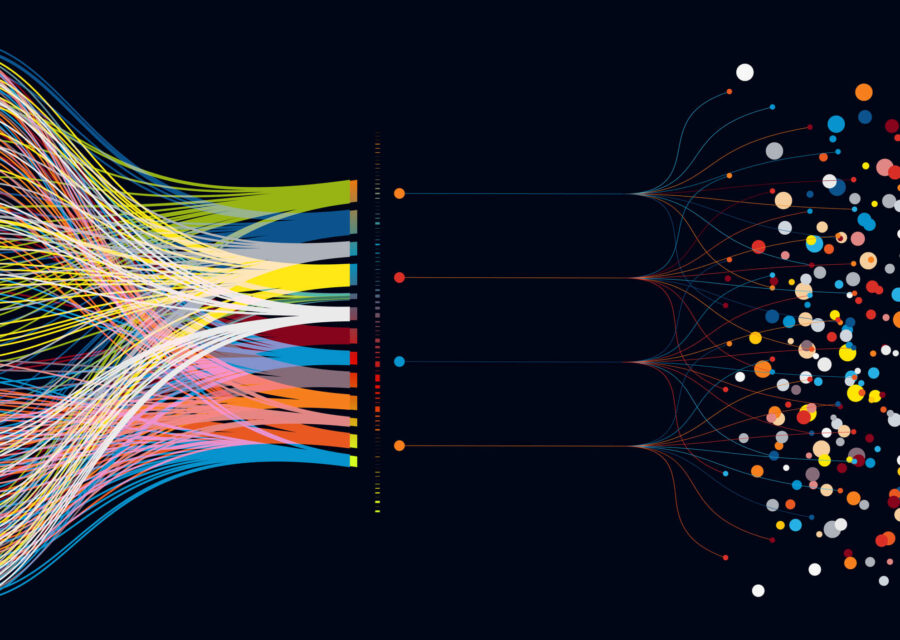Digital Transformation & Advanced Technologies
Transforming data into actionable information using advanced technologies.
In an age of technical transformation, federal agencies and their stakeholders have to understand, establish policy and integrate emerging technologies to keep pace with the demands driven by commercial innovation. Our technical expertise, integration experience, extensive understanding of our nation’s critical infrastructure, and business process and stakeholder management capabilities empower our customers to launch bold, mission-oriented initiatives while integrating advanced operational improvements and efficiencies.
MODELING & SIMULATION
We help federal agencies and their stakeholders understand the transformative capabilities of innovative technologies to develop regulatory policies, operational processes, and integration strategies required to meet stakeholder demands. From concept development and evaluation to implementation and deployment, LST uses advanced solutions to reengineer legacy processes and introduce transformative innovations in the operational context of our customer’s mission. We leverage cutting-edge technologies and practices in modeling and simulation (ModSim) to support research and development activities that drive our national critical infrastructure. Whether our customer’s mission requires modeling for system performance, operational impact analysis, or integrating new capabilities into operations, our ModSim capabilities enable our customers to visualize new operational procedures to understand these transformative technologies’ impact on their mission fully. Our experts leverage the contemporary tools for ModSim, big data analytics, Artificial Intelligence (AI), Machine Learning (ML), and many others to extract meaningful insights and inform policymakers, business process analysts, and operational decision-makers. We equip our customers with the digital solutions they need to overcome today’s demands and prepare for tomorrow’s challenges.


RESILIENCY MODELS & TOOLS
LST develops models and tools that support resiliency operations from planning through recovery. We help our customers improve processes and outcomes with real-time analytical tools that support decision-making. By implementing resiliency models and tools, organizations can more effectively prepare for and adapt to evolving threats to withstand and recover from deliberate attacks, accidental failures, natural disasters, and other service-impacting events. LST has developed key user interfaces for air traffic and technical operations personnel to provide real-time updates of infrastructure assets, coordinate air space transition, assess air travel’s impact, and generate status updates to keep stakeholders informed.
DATA SCIENCE TOOLS
Transforming data into actionable information using advanced technologies is the cornerstone of LST’s data science practice. Our data analytics framework brings the tools, processes, data science expertise, and domain talent necessary to turn data into information. Our interdisciplinary approach partners data scientists, IT systems, and functional domain experts to access, validate trustworthiness, assess, and define data governance to generate the actionable insights decision-makers require to create the operational improvements our customer’s demand. While our system experts identify vital systems and authoritative data, our operations teams work with stakeholders to develop the use cases and establish the operational context for the data. We apply data processing methods and statistical analysis to structured and unstructured data, analyze operational processes, then employ carefully crafted AI and ML models to decompose, understand, and generate operational insights. Our customers are empowered by AI and ML capabilities that analyze current operational conditions and create predictive models capable of learning to anticipate operational disruptions and plan for contingencies. We do more than help our customers improve their operations; we transform how they operate.


ARTIFICIAL INTELLIGENCE (AI) & MACHINE LEARNING (ML)
With a deep understanding of the National Airspace System (NAS) and Air Traffic Management (ATM) operations, we apply advanced AI and ML analytical techniques to demonstrate how FAA information services can be delivered over System Wide Information Management (SWIM). These information services inform operational decision makers to help understand challenges and improve ATM. The FAA’s goal of an Information-Centric NAS is evolving to integrate new airspace users, technologies, capabilities, and techniques for advanced probabilistic and predictive modeling. Improved modeling—informed by decision support tools and built on a foundation of advanced information exchange over SWIM—will enhance planning for air traffic operations to enable continuous NAS modernization. The application of AI/ML capabilities will support the optimization of vast NAS/ATM data through improved probabilistic and predictive modeling, enabling the transformation to info-centric operations.
INTEGRATING NEW AIRSPACE USERS
Our air traffic operations experts perform research, engineering, and information architecture activities to help transition our nation’s critical infrastructure to a more info-centric NAS. Our robust understanding of the current NAS and Air Traffic Control (ATC) operations allows us to provide practical and innovative ideas that support integrating new operations and entrants into the NAS, including exploration, development, and maturation of products and execution of demonstration and validation exercises for changes needed across the operational landscape affected by Unmanned Aircraft System (UAS) operations. Crucial to the successful implementation of the functional changes is a holistic view across the UAS “domains” [UAS Traffic Management (UTM), Urban Air Mobility (UAM), Advanced Air Mobility (AAM), Upper Class E Traffic Management (ETM)] that considers the implications of planned NAS/ATM evolution for traditional operations and their supporting processes and procedures.


DIGITALIZATION
We apply the latest tools and processes to rapidly move government clients from analog processes to automated, digitized operational business solutions. Our staff has experience employing tool-centric automation and modernizing communication systems in real-time and back-office systems to provide a range of rapid solutions for the most challenging government concerns. We support new entrance integration into the NAS, investigating, analyzing, and developing technologies to convert analog communication to digital (machine-readable) information, defining methods and processes for automated systems to communicate with humans through verbal, textual, and graphical interactions. This process brings alternate communication paths for remotely piloted and autonomous aircraft operations.
